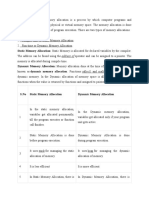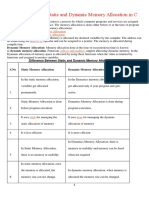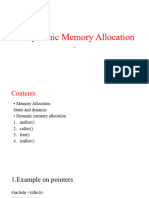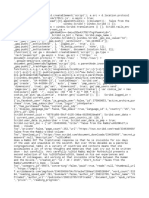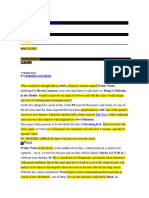0% found this document useful (0 votes)
8 views6 pagesDynamic Memory Allocation
The document explains two methods of memory allocation: static and dynamic. Static memory allocation occurs at compile time and can lead to wastage of memory, while dynamic memory allocation occurs at runtime and allows for flexible memory usage through functions like malloc, calloc, realloc, and free. The main advantage of dynamic memory allocation is efficient memory usage, but it requires careful management by the programmer to avoid memory leaks.
Uploaded by
aryananand548Copyright
© © All Rights Reserved
We take content rights seriously. If you suspect this is your content, claim it here.
Available Formats
Download as PDF, TXT or read online on Scribd
0% found this document useful (0 votes)
8 views6 pagesDynamic Memory Allocation
The document explains two methods of memory allocation: static and dynamic. Static memory allocation occurs at compile time and can lead to wastage of memory, while dynamic memory allocation occurs at runtime and allows for flexible memory usage through functions like malloc, calloc, realloc, and free. The main advantage of dynamic memory allocation is efficient memory usage, but it requires careful management by the programmer to avoid memory leaks.
Uploaded by
aryananand548Copyright
© © All Rights Reserved
We take content rights seriously. If you suspect this is your content, claim it here.
Available Formats
Download as PDF, TXT or read online on Scribd
/ 6


